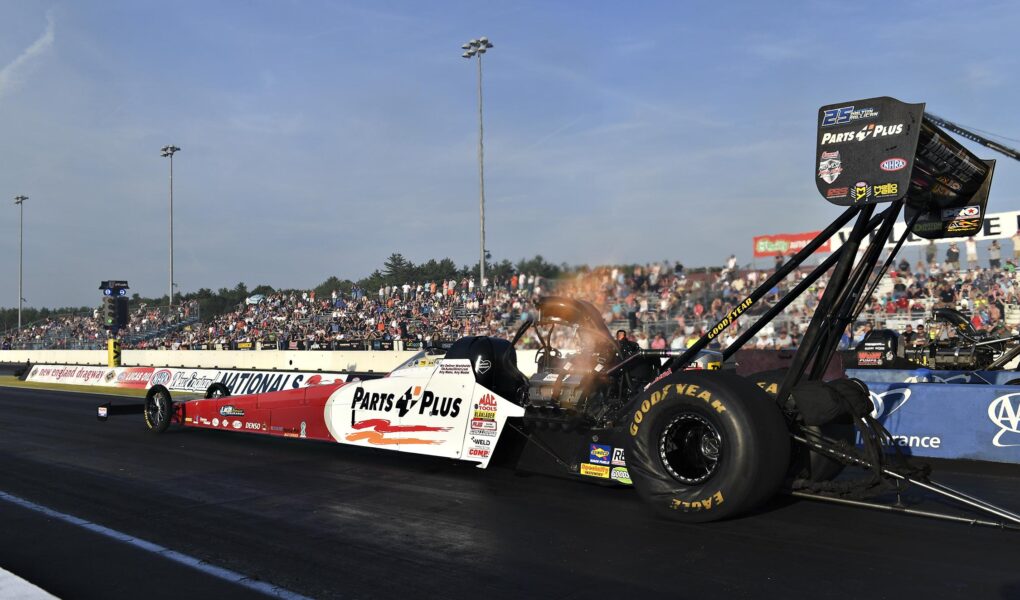In the world of motorsports, few events ignite the spirit of competition quite like quarter mile drag racing. This electrifying race, where cars launch from a standstill and sprint down a straight track for exactly 1,320 feet, is not merely a test of speed but a showcase of engineering prowess, driver skill, and adrenaline-fueled excitement. From the roar of engines to the adrenaline-pumping countdown to the green light, each race is a thrilling spectacle that captivates fans and rivals alike. With roots tracing back to the early days of American muscle cars and a culture that continues to evolve, quarter mile drag racing has become a prominent fixture in the automotive world, embracing everything from classic hot rods to cutting-edge electric vehicles. Join us as we delve into the exhilarating universe of drag racing, exploring its history, mechanics, and the passion that fuels this high-octane pursuit.
Table of Contents
- Understanding the Basics of Quarter Mile Drag Racing
- Mastering Your Vehicle for Optimal Performance
- Essential Gear and Safety Measures for Drag Racers
- Strategies for Success: Tips and Techniques to Improve Your Times
- Q&A
- Key Takeaways
Understanding the Basics of Quarter Mile Drag Racing
Quarter mile drag racing is a thrilling motorsport that focuses on straight-line speed and precision. Competitors race their vehicles over a distance of 1,320 feet, which is the standard quarter mile length. This form of racing emphasizes a combination of performance, technique, and often, the tuner’s expertise in modifying the car. Key components that contribute to a successful run include:
- Launch Technique: Getting off the line quickly is crucial. Drivers must master the art of launching, which involves a balance of throttle control and reaction time.
- Power-to-Weight Ratio: The amount of power a vehicle has in relation to its weight plays a significant role in achieving high speeds.
- Tire Selection: Choosing the right tires for grip can significantly affect a car’s performance, especially during the initial acceleration phase.
As part of the racing ecosystem, participants can be categorized based on their vehicle types and modifications, which often leads to friendly yet competitive showdowns. Understanding different classes helps enthusiasts gauge their competition and set realistic goals. Below is a simplified table showing some common classes in quarter mile drag racing:
| Class | Description |
|---|---|
| Street | For daily-driven cars with minimal modifications. |
| Super Street | For modified street cars with enhanced performance parts. |
| Pro | Highly tuned vehicles built for peak performance. |
Mastering Your Vehicle for Optimal Performance
To achieve peak performance in quarter mile drag racing, it’s essential to view your vehicle as an interconnected system where every component plays a crucial role. Begin with the engine, which should be fine-tuned to maximize horsepower and torque. Consider upgrading parts such as the intake system, exhaust headers, and ECU remapping to unleash your vehicle’s full potential. Don’t overlook the importance of a well-optimized transmission; a high-performance torque converter can make a significant difference, ensuring that every ounce of power is effectively transferred to the wheels.
In addition to powertrain modifications, focus on suspension and tires. Proper weight distribution can be a game-changer when it comes to acceleration. Upgrading to adjustable coilovers allows for precise tuning of ride height and stiffness, enabling better traction during launches. It’s also crucial to choose the right tires, as their grip can significantly influence your 60-foot times. Here’s a brief overview of essential components for peak performance:
| Component | Upgrade Option | Benefit |
|---|---|---|
| Engine | High-Performance Intake | Increases airflow |
| Transmission | Torque Converter | Better launch response |
| Suspension | Adjustable Coilovers | Improved handling and traction |
| Tires | Drag Radials | Enhanced grip |
Essential Gear and Safety Measures for Drag Racers
When it comes to quarter mile drag racing, having the right gear is essential for both performance and safety. Drag racers should consider investing in high-quality racing suits, which are designed to protect them from fire hazards while offering flexibility during intense runs. Additionally, a suitable helmet is non-negotiable; it should meet safety standards and fit snugly to provide crucial head protection. Along with these, racing gloves and shoes are vital, as they enhance grip and control over the vehicle during high-speed maneuvers. Don’t forget the safety harness, which secures the driver in the seat, safeguarding them against sudden stops or collisions on the track.
Safety measures extend beyond personal gear. Track officials and teams should ensure the vehicle is outfitted with critical components such as roll cages and fire suppression systems, which are vital for protecting drivers in the event of an accident. Regular safety checks of the car’s performance and condition can help prevent malfunctions on race day. Here’s a brief overview of key safety equipment and considerations:
| Safety Gear/Equipment | Purpose |
|---|---|
| Racing Suit | Protects against fire hazards |
| Helmet | Protects head from impacts |
| Fire Suppression System | Extinguishes fire in emergencies |
| Roll Cage | Provides structural integrity during rollover |
| Safety Harness | Secures driver in the event of crash |
Strategies for Success: Tips and Techniques to Improve Your Times
To achieve your personal best on the quarter mile track, it’s crucial to focus on several key factors that influence your performance. First and foremost is launch technique. Practice your reaction times and ensure you’re releasing the clutch and applying throttle in a smooth, coordinated manner. A well-timed launch can significantly reduce your overall time. Additionally, consider the tire pressure; it can affect traction and grip. Here are a few tips for optimizing your launch:
- Adjust tire pressure according to track conditions.
- Use a launch control system if available.
- Minimize wheel spin by gradually increasing throttle.
Next, fine-tuning your vehicle’s setup can lead to improved times at the strip. Focus on weight distribution and ensure your car is balanced. Lightweight components and proper suspension settings can make a big difference. Remember, your engine tuning is also vital; consider investing in a quality tune that maximizes horsepower and torque. To illustrate the potential gains, here’s a comparison table of small adjustments and their impact:
| Adjustment | Potential Time Reduction |
|---|---|
| Reduced Weight | 0.1 – 0.3 seconds |
| Improved Tire Grip | 0.2 – 0.4 seconds |
| Better Engine Tune | 0.3 – 0.5 seconds |
Q&A
Q1: What exactly is quarter mile drag racing?
A1: Quarter mile drag racing is a timed motorsport where two vehicles compete over a straight track that measures a quarter mile (1,320 feet). The race begins with a green light, and the objective is to complete the distance as quickly as possible, showcasing the power, speed, and performance of the vehicles.
Q2: How did quarter mile drag racing originate?
A2: The roots of quarter mile drag racing can be traced back to the post-World War II era in the United States. As car enthusiasts sought thrill and competition, informal races began to take place on airstrips and open roads. By the 1950s, the organization and regulation of these events took shape, leading to the establishment of dedicated drag strips and racing leagues.
Q3: What types of vehicles participate in quarter mile drag racing?
A3: A wide variety of vehicles participate, ranging from street-legal cars to heavily modified racing machines. Categories include everything from classic muscle cars and modern sports cars to motorcycles and even purpose-built dragsters that are engineered for maximum speed. Each vehicle is equipped with specific modifications to enhance its performance for the quarter mile run.
Q4: What skills or techniques are essential for a successful drag racer?
A4: Successful drag racing requires a blend of skills and techniques. First, launching the vehicle at the right moment is crucial—this involves mastering the “Christmas tree” light system. Additionally, racers must possess strong reflexes for gear changes, an understanding of their vehicle’s power band, and the ability to make split-second decisions regarding racing lines and speed control.
Q5: What is the importance of the “reaction time” in drag racing?
A5: Reaction time is the duration it takes for a driver to respond to the green light signal indicating the start of the race. This fraction of a second can be pivotal, as a faster reaction time can lead to an advantage, even if the other racer has a more powerful vehicle. A strong reaction time can mean the difference between winning and losing, making it a critical aspect of drag racing strategy.
Q6: Are there different classes or divisions in quarter mile drag racing?
A6: Yes, quarter mile drag racing features various classes and divisions to accommodate the diverse range of vehicles and performance levels. These classes often categorize vehicles by engine size, weight, modifications, and purpose. Examples include Top Fuel, Funny Car, Pro Stock, and brackets for amateur racers, ensuring a fair competition environment for all participants.
Q7: What safety measures are taken in quarter mile drag racing?
A7: Safety is a top priority in quarter mile drag racing. Facilities are equipped with safety barriers, fire safety equipment, and medical personnel on standby. Racers are required to wear helmets, fire suits, and harnesses. Strict vehicle inspections are also conducted to ensure that all safety regulations, including roll cages and fire suppression systems, are in place before a race can commence.
Q8: How has technology influenced quarter mile drag racing?
A8: Technology has dramatically transformed quarter mile drag racing over the years. From advancements in engine performance and aerodynamics to sophisticated data analysis tools and tuning software, racers now have an arsenal of technology at their fingertips. Innovations like launch control systems and electronic fuel injection allow for better optimization and increased performance, enhancing the excitement of the sport.
Q9: Is quarter mile drag racing considered safe for spectators?
A9: Yes, while drag racing does involve inherent risks, significant measures are taken to ensure the safety of spectators. Designated viewing areas are set up at a safe distance from the track, and professional safety crews are readily available. Events are regulated by organizations that prioritize the safety of everyone involved, maintaining a secure and enjoyable environment for fans.
Q10: How can someone get started in quarter mile drag racing?
A10: Getting started in quarter mile drag racing involves a few fundamental steps. First, familiarize yourself with the rules and regulations of your local drag strip. Start with a suitable vehicle—this can be a modified streetcar or a dedicated drag car. It’s also essential to participate in practice runs to gain experience and learn the nuances of racing. Joining local clubs or communities can provide support, resources, and camaraderie along your racing journey.
Key Takeaways
As the sun sets over the asphalt, the roar of engines fades into the distance, marking the end of another electrifying day at the quarter mile. Here in this microcosm of speed and skill, every second counts, every choice matters. From the meticulous preparation to the heart-pounding launch, quarter mile drag racing encapsulates a visceral connection between man, machine, and the relentless pursuit of victory. Whether you’re a seasoned racer or a curious onlooker, the thrill of the race offers something for everyone—a celebration of precision, passion, and the indomitable spirit of competition.
As we conclude our exploration of this adrenaline-fueled sport, we invite you to witness it firsthand, to feel the earth tremble beneath your feet as rivals challenge each other at the starting line. In the world of drag racing, every race is a story waiting to be told, and each participant adds their own chapter to the legacy of speed. So gear up, buckle in, and embrace the exhilarating rush of the quarter mile—where every heartbeat echoes the promise of the next unforgettable race.



